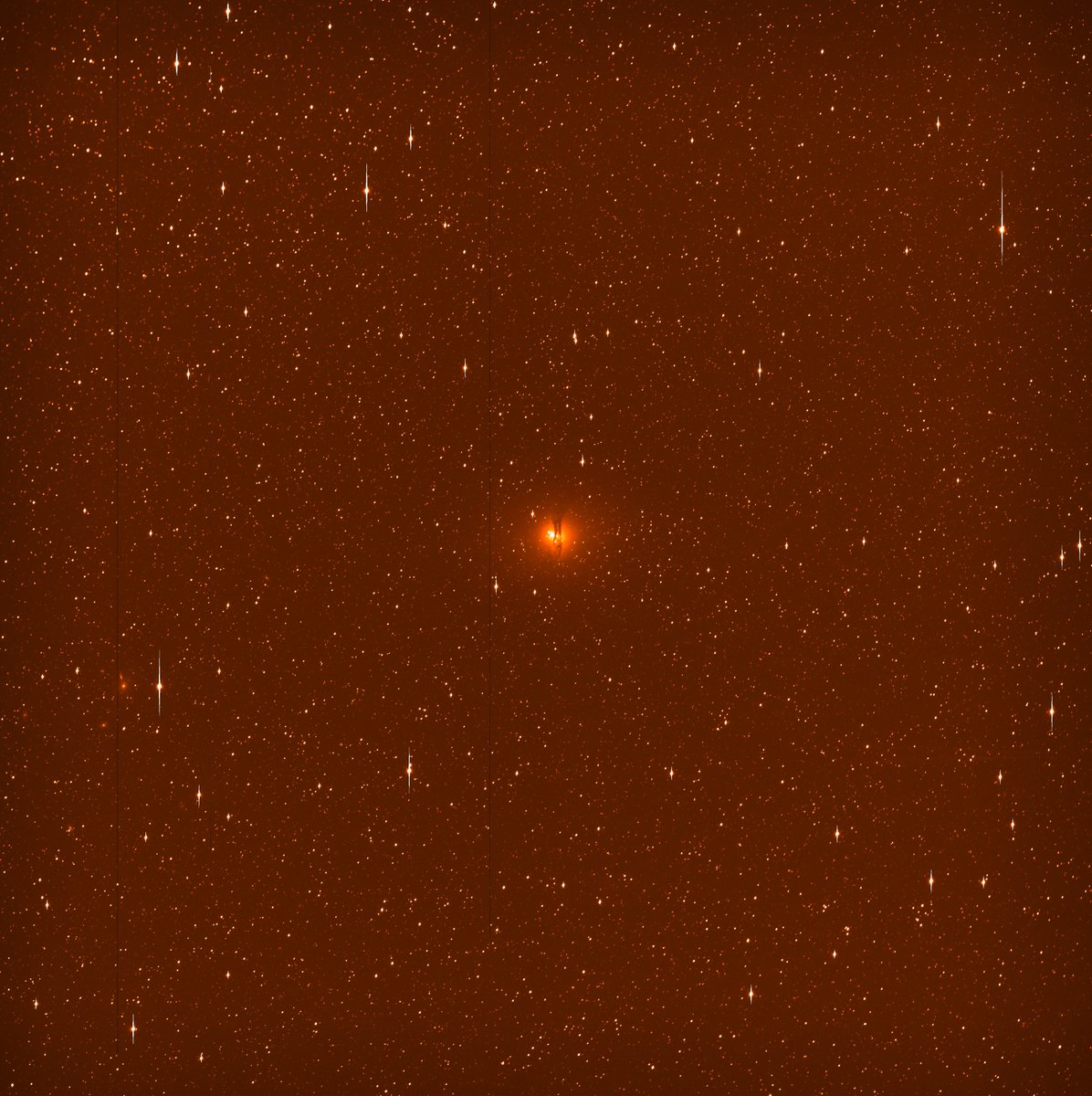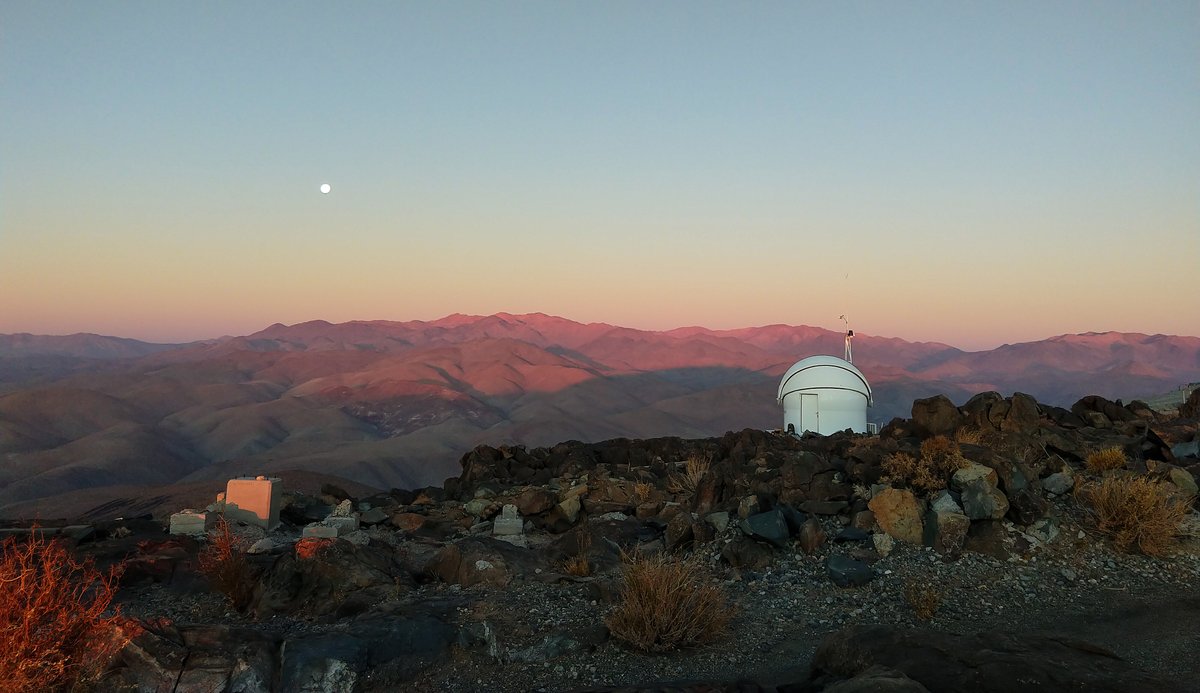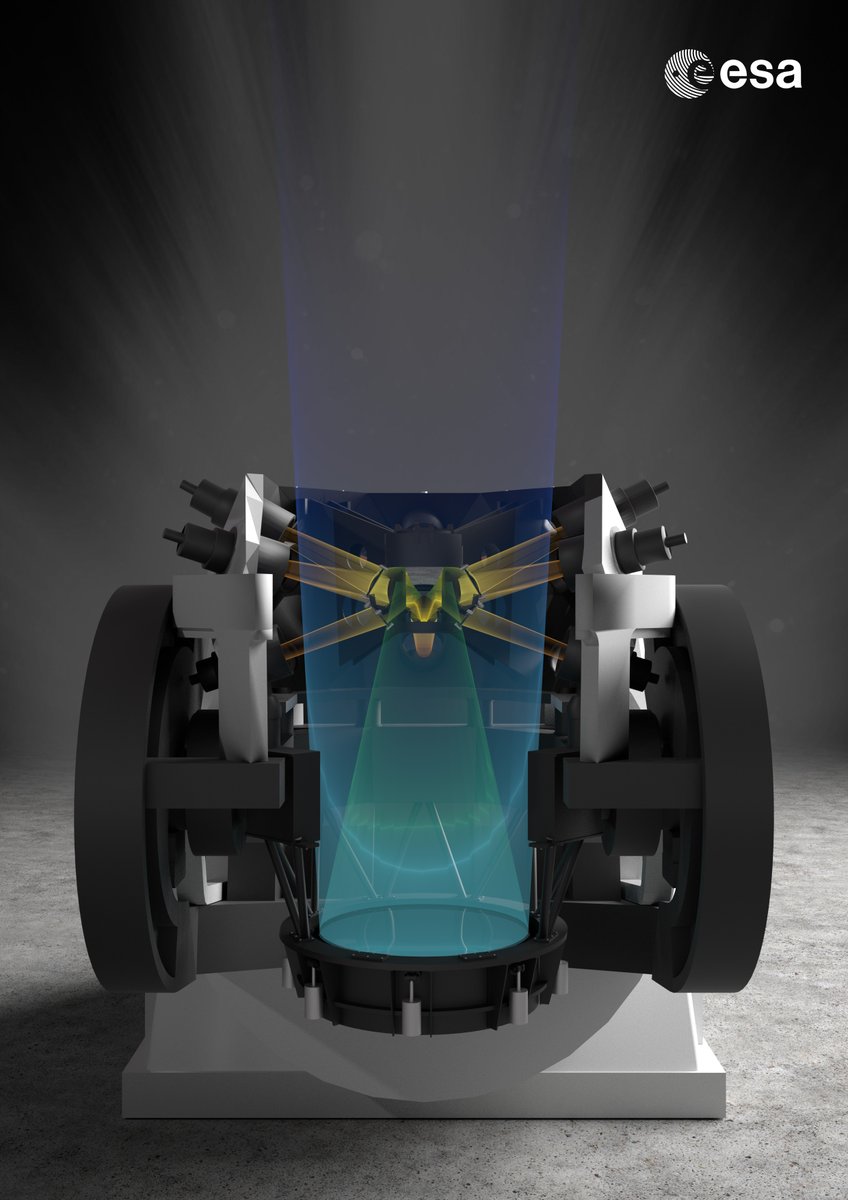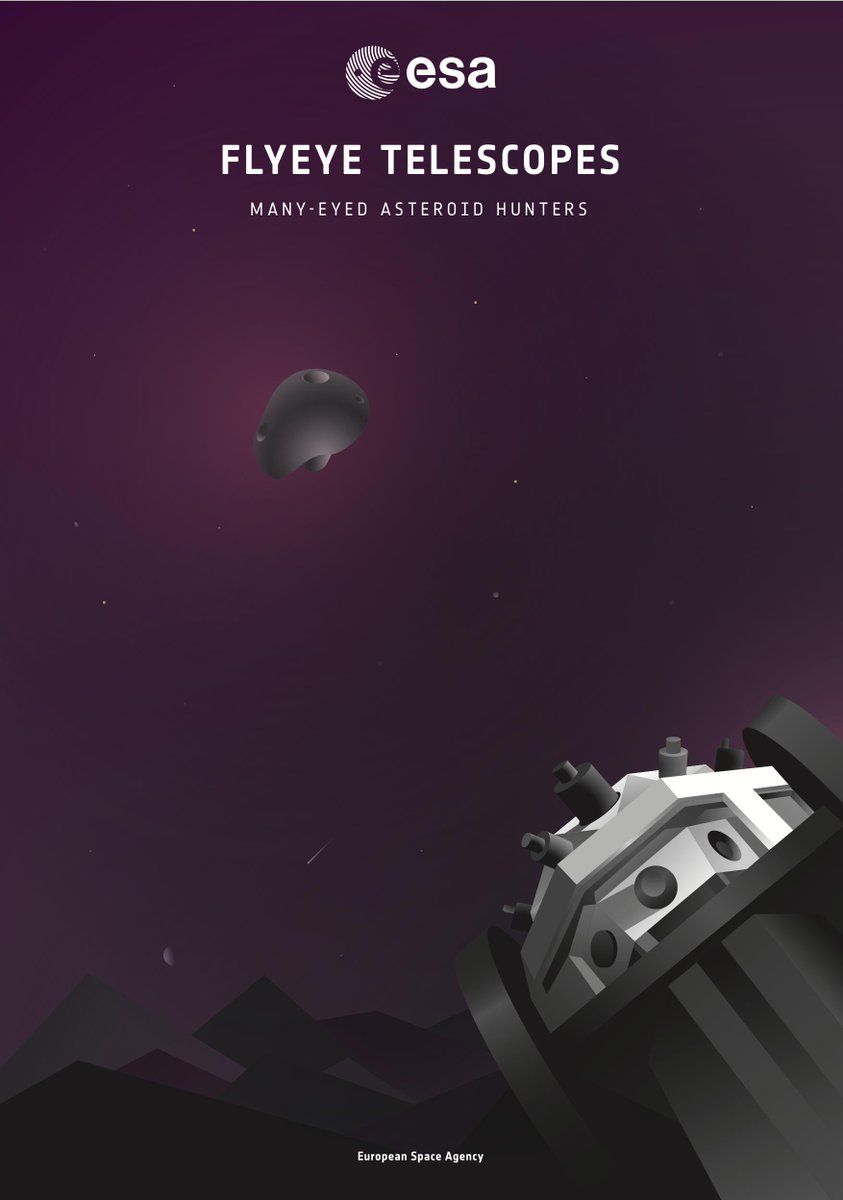ESA’s second #asteroid-spotting Test-Bed Telescope has seen ‘first light’ – the first time a new telescope is used to look up at the sky.
The telescope – dubbed TBT2 – is hosted at @ESO’s #LaSilla Observatory in Chile.
#PlanetaryDefence
The telescope – dubbed TBT2 – is hosted at @ESO’s #LaSilla Observatory in Chile.
#PlanetaryDefence
The new telescope will work alongside its identical partner at @ESA’s Cebreros station in Spain to test the hardware and software for the future network of asteroid-hunting #Flyeye telescopes.
More info here: https://www.esa.int/Safety_Security/Planetary_Defence/New_ESA_telescope_in_South_America_to_search_for_dangerous_asteroids
https://www.esa.int/Safety_Se... class="Emoji" style="height:16px;" src=" https://abs.twimg.com/emoji/v2/... draggable="false" alt="📸" title="Kamera mit Blitz" aria-label="Emoji: Kamera mit Blitz">: F. Ocaña/J. Isabel/Quasar SR
More info here: https://www.esa.int/Safety_Security/Planetary_Defence/New_ESA_telescope_in_South_America_to_search_for_dangerous_asteroids
Spotting Earth-threatening #asteroids is tough, partly because the sky is so big.
ESA’s future #Flyeye telescopes will use a solution inspired by nature – imitating the eye of an insect to look in many directions at once. https://abs.twimg.com/emoji/v2/... draggable="false" alt="🪰" title="Fly" aria-label="Emoji: Fly">
https://abs.twimg.com/emoji/v2/... draggable="false" alt="🪰" title="Fly" aria-label="Emoji: Fly">
ESA’s future #Flyeye telescopes will use a solution inspired by nature – imitating the eye of an insect to look in many directions at once.
Every night, a network of these #Flyeye telescopes will scan the entire sky for rogue objects, automatically flagging any that pose an impact risk and bringing them to the attention of human researchers the next morning.  https://abs.twimg.com/emoji/v2/... draggable="false" alt="🔎" title="Nach rechts zeigende Lupe" aria-label="Emoji: Nach rechts zeigende Lupe">
https://abs.twimg.com/emoji/v2/... draggable="false" alt="🔎" title="Nach rechts zeigende Lupe" aria-label="Emoji: Nach rechts zeigende Lupe">
#PlanetaryDefence
#PlanetaryDefence
The Test-Bed Telescopes are key for fine-tuning the algorithms, remote operation and data processing techniques that the automated #Flyeye network will use to help keep us safe from hazardous asteroids.  https://abs.twimg.com/emoji/v2/... draggable="false" alt="🌍" title="Europa-Afrika auf dem Globus" aria-label="Emoji: Europa-Afrika auf dem Globus">
https://abs.twimg.com/emoji/v2/... draggable="false" alt="🌍" title="Europa-Afrika auf dem Globus" aria-label="Emoji: Europa-Afrika auf dem Globus">
#PlanetaryDefense
 https://abs.twimg.com/emoji/v2/... draggable="false" alt="📸" title="Kamera mit Blitz" aria-label="Emoji: Kamera mit Blitz">: F. Ocaña/J. Isabel/Quasar SR
https://abs.twimg.com/emoji/v2/... draggable="false" alt="📸" title="Kamera mit Blitz" aria-label="Emoji: Kamera mit Blitz">: F. Ocaña/J. Isabel/Quasar SR
#PlanetaryDefense

 Read on Twitter
Read on Twitter

 " title="Spotting Earth-threatening #asteroids is tough, partly because the sky is so big. ESA’s future #Flyeye telescopes will use a solution inspired by nature – imitating the eye of an insect to look in many directions at once. https://abs.twimg.com/emoji/v2/... draggable="false" alt="🪰" title="Fly" aria-label="Emoji: Fly">">
" title="Spotting Earth-threatening #asteroids is tough, partly because the sky is so big. ESA’s future #Flyeye telescopes will use a solution inspired by nature – imitating the eye of an insect to look in many directions at once. https://abs.twimg.com/emoji/v2/... draggable="false" alt="🪰" title="Fly" aria-label="Emoji: Fly">">
 " title="Spotting Earth-threatening #asteroids is tough, partly because the sky is so big. ESA’s future #Flyeye telescopes will use a solution inspired by nature – imitating the eye of an insect to look in many directions at once. https://abs.twimg.com/emoji/v2/... draggable="false" alt="🪰" title="Fly" aria-label="Emoji: Fly">">
" title="Spotting Earth-threatening #asteroids is tough, partly because the sky is so big. ESA’s future #Flyeye telescopes will use a solution inspired by nature – imitating the eye of an insect to look in many directions at once. https://abs.twimg.com/emoji/v2/... draggable="false" alt="🪰" title="Fly" aria-label="Emoji: Fly">">
 #PlanetaryDefence" title="Every night, a network of these #Flyeye telescopes will scan the entire sky for rogue objects, automatically flagging any that pose an impact risk and bringing them to the attention of human researchers the next morning. https://abs.twimg.com/emoji/v2/... draggable="false" alt="🔎" title="Nach rechts zeigende Lupe" aria-label="Emoji: Nach rechts zeigende Lupe"> #PlanetaryDefence" class="img-responsive" style="max-width:100%;"/>
#PlanetaryDefence" title="Every night, a network of these #Flyeye telescopes will scan the entire sky for rogue objects, automatically flagging any that pose an impact risk and bringing them to the attention of human researchers the next morning. https://abs.twimg.com/emoji/v2/... draggable="false" alt="🔎" title="Nach rechts zeigende Lupe" aria-label="Emoji: Nach rechts zeigende Lupe"> #PlanetaryDefence" class="img-responsive" style="max-width:100%;"/>
 #PlanetaryDefensehttps://abs.twimg.com/emoji/v2/... draggable="false" alt="📸" title="Kamera mit Blitz" aria-label="Emoji: Kamera mit Blitz">: F. Ocaña/J. Isabel/Quasar SR" title="The Test-Bed Telescopes are key for fine-tuning the algorithms, remote operation and data processing techniques that the automated #Flyeye network will use to help keep us safe from hazardous asteroids. https://abs.twimg.com/emoji/v2/... draggable="false" alt="🌍" title="Europa-Afrika auf dem Globus" aria-label="Emoji: Europa-Afrika auf dem Globus"> #PlanetaryDefensehttps://abs.twimg.com/emoji/v2/... draggable="false" alt="📸" title="Kamera mit Blitz" aria-label="Emoji: Kamera mit Blitz">: F. Ocaña/J. Isabel/Quasar SR" class="img-responsive" style="max-width:100%;"/>
#PlanetaryDefensehttps://abs.twimg.com/emoji/v2/... draggable="false" alt="📸" title="Kamera mit Blitz" aria-label="Emoji: Kamera mit Blitz">: F. Ocaña/J. Isabel/Quasar SR" title="The Test-Bed Telescopes are key for fine-tuning the algorithms, remote operation and data processing techniques that the automated #Flyeye network will use to help keep us safe from hazardous asteroids. https://abs.twimg.com/emoji/v2/... draggable="false" alt="🌍" title="Europa-Afrika auf dem Globus" aria-label="Emoji: Europa-Afrika auf dem Globus"> #PlanetaryDefensehttps://abs.twimg.com/emoji/v2/... draggable="false" alt="📸" title="Kamera mit Blitz" aria-label="Emoji: Kamera mit Blitz">: F. Ocaña/J. Isabel/Quasar SR" class="img-responsive" style="max-width:100%;"/>


